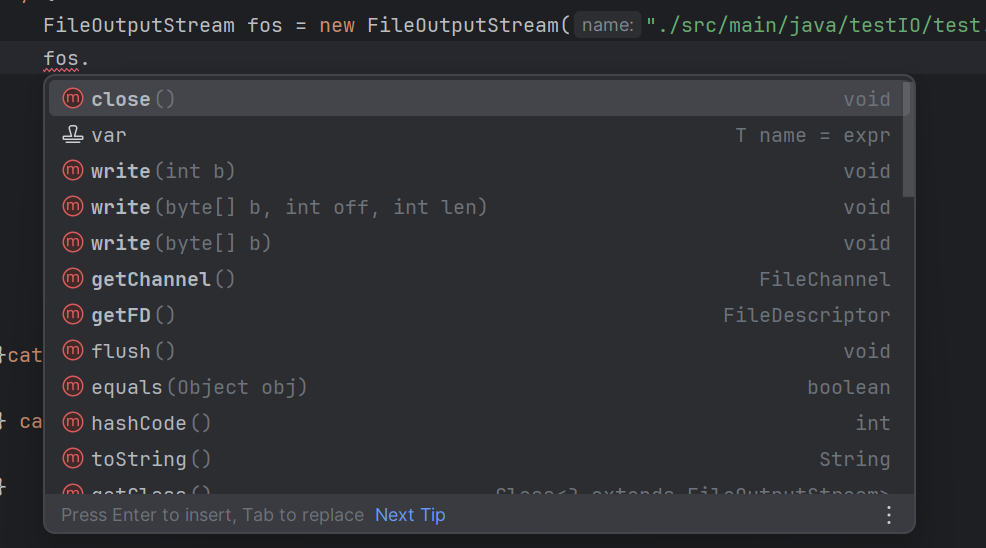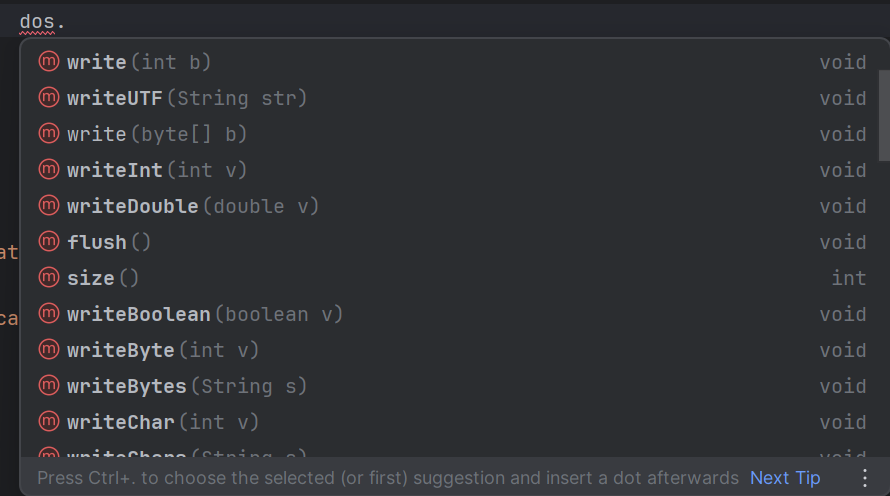装饰模式
装饰模式(Decorator Pattern)是一种结构型设计模式,它允许在不修改对象自身代码的情况下,动态地为对象添加新的行为。装饰模式通过创建一个装饰类将原始类的实例包裹起来,并在保持类接口不变的前提下,提供额外的功能。
对应实际:当我们使用某个功能的时候,总会发现系统或者库给我们的功能总是过于单一,但是我们需要实现的需求又是多种多样的,所以我们需要对之前的接口进行扩增,做出相应的接口来实现特定的功能
看下面代码(JAVA的)
1
2
3
4
5
6
7
8
9
10
11
12
13
14
15
16
17
18
19
| public class IOss {
public static void main(String[] args) {
try {
FileOutputStream fos = new FileOutputStream("./src/main/java/testIO/test.txt");
BufferedOutputStream bos = new BufferedOutputStream(fos);
DataOutputStream dos = new DataOutputStream(bos);
dos.writeDouble(3.14159);
dos.writeInt(42);
dos.writeUTF("Hello, World!");
dos.close();
bos.close();
fos.close();
}catch (FileNotFoundException e ){
e.printStackTrace();
} catch (IOException e) {
throw new RuntimeException(e);
}
}
}
|


由此可见,经过一系列包装以后,本来对文件的操作只有普通的读和写
现在有了读/写 字符,数字…………..
在Go中
我觉得这种设计模式更多的是为人服务,目的就简便性
如果我们每次需要检查文件的时候我们肯定都会写
1
2
3
4
5
6
7
8
9
10
11
12
13
14
15
| func IsFileExistOrNot(path string) (bool, error) {
_, err := os.Stat(path)
if err != nil {
if os.IsNotExist(err) {
create, err := os.Create(path)
if err != nil {
return false, err
}
defer create.Close()
return true, nil
}
return false, err
}
return true, nil
}
|
但是我们不可能每次检查文件的时候都写上这个,不如直接创建一个文件
fs.go
然后在其中写入关于文件的各种操作,只需要传入path,data就可以实现原库中没有的操作
之后有某个需求的时候
1
2
3
4
5
6
| func LoadLog(path string){
b, _ := fs.IsFileExistingOrNot(path)
if !b{
panic(..)
}
}
|
以上。


